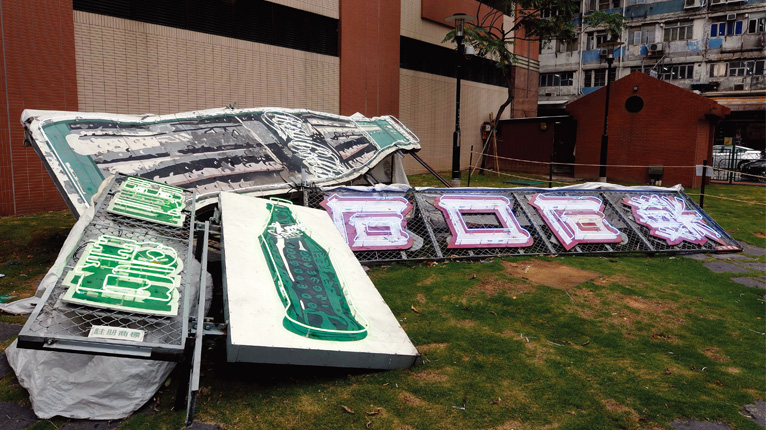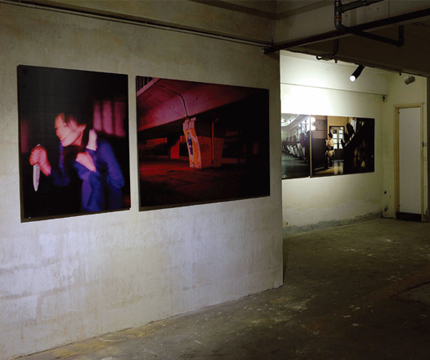YAU MA TEI: A SMATTERING OF MOBILE ARTWORK
| June 21, 2012 | Post In LEAP 15

MID-MAY IN Hong Kong— the arrival of another art fair left everyone dizzy amid the humidity and unseasonable rain. The highly-anticipated new visual culture museum, M+, contributed to the season’s loaded slate its first large-scale public exhibition project: “Mobile M+: Yau Ma Tei.”
In recent years art and culture in Hong Kong has expanded at an ostensibly blistering pace, but in truth adequate exhibition spaces are often little more than illusions of extravagance. Nowadays, it has become an accepted certitude that “an inch of land is an ounce of gold.” With the M+ facility not yet complete, the curatorial essence of “Mobile M+: Yau Ma Tei” adopts an ambiguous, ephemeral, and guerilla posture toward space, a modus operandi that counteracts the foregone conclusions of location.
Of course, this is not the first instance of metropolitan guerilla tactics in contemporary art exhibitions, and many are likely to see it as a matter of little fanfare or consequence. But many things taken for granted elsewhere are a horse of a different color in Hong Kong. To make this exhibition possible, much energy was devoted to finding middle ground with various government organs, and so if we consider the challenges posed by a rigid legal code and its controls on public space, the very occurrence of this program is itself a breakthrough.
I would go so far as to say that this exhibition smashes certain boundaries between the public and the art world in Hong Kong in terms of the location and utilization of public and private spaces. One example is Leung Mee-Ping’s neon signage installation, I Miss Fanta. The work not only occupies one corner of a park where children and the elderly often gather, but also infiltrates a private recycling shop adjacent to the park, where a recording of its reassembly is shown. The setting of filmmaker Yu Lik-wai’s video installation is a shabby, inconspicuous two-story office building, evoking the ambiance of a horror flick. A space one can usually see but not enter becomes the temporary home of Tsang Kin-Wah’s digital video installation. These works and the contributions of other participating artists all transgress the local audience’s conception of space, magnifying the exhibition’s signature characteristics of ambiguity and ephemerality.

The purport of “Mobile M+: Yau Ma Tei” is to bring the concepts of art and museum into society. Does this imply that we are moving in the direction of “community art?” I personally believe that the results of this exhibition clearly negate that idea. On many levels, Mobile M+ more closely resembles a small-scale biennial in form and attitude. The overall success of the exhibition is difficult to judge at this stage, and its legacy remains to be observed, but there is no question that its opening constitutes some kind of a small milestone. By adopting the word “in progress” for its Chinese-language title, instead of the usual translation of “mobile,” this project intends to invoke a certain sense of dynamic association and continuity for things to come. (Translated by Daniel Nieh)

